Where to sponsor
This child sponsorship guide will help you to choose where to sponsor a child. You are able to sponsor a child in well over 100 countries. As a charity we have been looking after orphans for more than 60 years in our SOS Children's Villages with their dedicated SOS mothers.
Click on a continent on the map for details of our SOS Children's Villages in that region, or scroll through the list below.
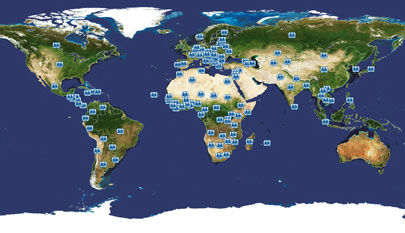
Africa Americas Middle East Asia Europe
Choosing the Right Child Sponsorship for You
Most Villages have children available for sponsorship. All you have to do is click on the 'sponsor online' button. Then you can mention the country and other preferences you may have in the 'special instructions' box. If you ask us for guidance or leave the box blank you are likely to be assigned a child in a new Village in Africa where we are expanding rapidly faced with the HIV/AIDS crisis.
We have decided not to display photos of children who are available for sponsorship publicly on our website. Our feeling is that it would not be fair to the sponsored children. We do however try to help get the right sponsored child for each sponsor. We often match ages and genders of a sponsors own child. We are happy for sponsors to choose a country or Village where their child lives. We do not generally allow sponsors to choose a disabled child (except for a few specialised Villages for children with polio or landmine injuries) because such children are better treated in a fully integrated manner, but do please make any reasonable request and we will do our best to fulfil it.
SOS Children Child Sponsorship Country List: A to Z
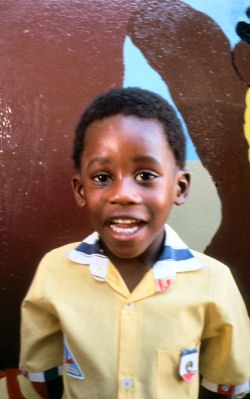 A
A
Albania in Tirana, supporting children affected by poverty.
Algeria where we have been working since 1981 and have an SOS Children's Village in Draria, south of Algiers.
Angola at Lubango or Benguela, where children have been innocent victims of civil war.
Argentina at either Oberá, Mar del Plata, Córdoba or Luján (near the capital Buenos Aires), where economic collapse in 2001 sees much of the population living in poverty.
Armenia where poverty is widespread and families with children under five make up 60% of those who are poor.
Azerbaijan which despite having reserves of oil and gas, has high levels of unemployment and low standards of living.
B
Bangladesh where political unrest and frequent natural disasters mean children are often abandoned. Over one third of children do not attend school and the literacy rate is under 50%.
Belarus where children affected by Chernobyl are supported through our work at Borovljany, north east of the capital Minsk and at Marina Gorka, south east of the capital.
Benin in either Natitingou, Dassa Zoume, or D'Abomey-Calavi. In Benin, poverty and illness are widespread.
Bolivia where nine SOS Children's Villages care for children in the poorest country in South America.
Bosnia where the aftermath of war and the daily struggle with poverty leave children with traumatic experiences.
Botswana in either Tlokweng, Francistown or Serowe. Low life expectancy and children orphaned due to HIV/AIDS means there is a growing number of children alone.
Brazil where 14 SOS Children's Villages give a family for life to children in need. Community projects based at these Villages provide practical support to children and families in the local communities.
Bulgaria in either Trjavna or Dren, where the transition to a market economy from communism has seen food and water shortages as well as high rates of inflation.
Burkina Faso where around three-quarters of a million children have lost one or both parents. Sponsor today at Dafra or Ouagadougou.
Burundi where civil war and lack of infrastructure mean children at Gitega, Bujumbura, Muyinga, Cibitoke and Rutana are in need of support.
C
Cambodia in the capital Phnom Penh, Angkor-Siem Reap or Battambang, where years of war have had a huge impact on the country's infrastructure. Around 10% of children in Cambodia are orphans.
Cameroon in Mbalmayo, near the capital Yaoundé, or Douala. Poverty is widespread and infant mortality is increasing.
Canada learn more about our work.
Cape Verde in either Assomada or Sao Domingos and you will support children from a population with chronic malnutrition and widespread poverty.
Central African Republic at Bangui or Bouar, where widespread poverty and access to basic services are limited.
Chad at our SOS Children's Village in N'Djamena. In the capital, in the south of the country, the average daily income per head is 50 pence.
Chile where there are high levels of unemployment, malnutrition and housing shortages. 13 SOS Children’s Villages and many community projects support children and communities throughout the country.
China where varying degrees of support for children exist in the country. China is becoming a growing worldwide economic force. 10 SOS Children’s Villages, the newest in the capital Beijing, provide a loving home to children.
Colombia where there are SOS Children’s Villages around the country, including one in Bogota, the capital. The others are located in Ibagué, Rionegro, Bucaramanga and Ipiales.
Costa Rica where there is high inflation and one fifth of the population live in poverty.
Cote D'Ivoire (Ivory Coast) which is one of the world's leading coffee and cocoa exporters. Rapid population growth and migration to cities such as Abobo Gare and Aboisso mean that children have been adversely affected by unemployment and other social issues.
Croatia where the after effects of the war in the 1990s still leaves problems for children today with refugees and internally displaced persons being affected by the crisis.
Czech Republic where a programme of regeneration continues following the dissolution of the former Communist state of Czechoslovakia.
D
Democratic Republic of Congo at Bukavu, Uvira or Kinshasa; where war, malnutrition and preventable diseases have affected children.
Dominican Republic where children under 5 still die from malnutrition and nearly one third of the population live below the poverty line.
E
Ecuador where the economy still struggles with the after effects of recession in the 1990s.
Egypt Learn more about our work.
El Salvador where many children have found a loving family in SOS Children’s Villages at Sonsonate, Santa Tecla, Santa Ana, San Miguel and San Vincente.
Equatorial Guinea at Bata, where we work to improve levels of child welfare (most of the population live below the poverty line) and education.
Estonia where the numbers of children being abandoned is rising due to social problems such as high living costs, alcoholism and a poor welfare state.
Ethiopia at one of our seven SOS Children's Villages, where two thirds of the population are illiterate and continuing food shortages result in malnutrition.
G
Gambia where health and education systems are lacking and the population exists at subsistence level.
Georgia which is one of the poorest former Soviet Union countries. The daily income is less than £1.50 per day.
Ghana at Asiakwa, Tema, Kumasi or Tamale. Ghana is one the world's poorest countries with more than two thirds of the population dependent on small scale farming.
Greece where children face a wide range of social and economic problems.
Guatemala where illiteracy, infant mortality and malnutrition are among the highest in the region and five SOS Children's Villages provide a family for life to children at Quetzaltenango, Retalhuleu, Jocotán, San Cristóbal and San Jerónimo.
Guinea where infant mortality is amongst the highest in the world and rates of HIV/AIDS are increasing.
Guinea-Bissau which has some of the highest disease rates in the West of Africa and there is limited access to medical facilities.
H
Haiti at Santo or Cap Haïtien, where 80% of the population live below the poverty line and access to healthcare is scarce. Recovery from the 2010 earthquake is ongoing.
Honduras where there are high rates of infant and child mortality in the under fives, and the country has seen a sharp increase in HIV/AIDS.
Hungary at Battonya, Kecskemét and Koszeg, where problems left from the Communist era still affect children today.
I
India which is one of the fastest growing countries in the world, but many young children are malnourished. Many children are sent to work at a young age and girls remain disadvantaged.
Indonesia where a high refugee population strains existing health, housing and education services.
Israel where we have been working since 1981, and now run two SOS Children's Villages.
J
Jamaica where widespread crime and poverty have a daily impact on hundreds of thousands of children.
Jordan in either Amman, Aqaba or Irbid, where poverty and unemployment is high in this country which relies on importing basic foodstuffs.
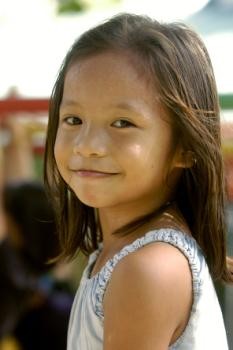 K
K
Kazakhstan where extreme poverty exists despite foreign investment, and there are many social challenges facing children and their families.
Kenya where many were displaced due to political rioting in 2008. SOS Children’s Villages at Mombasa, Eldoret, Meru, Nairobi and Kisumu help to care for children affected.
Kosovo where unemployment is high and the infrastructure is in need of upgrading.
Kyrgyzstan in the capital Bishkek or at Cholpon-Ata, where many children work in local bazaars and many are abandoned by their parents.
L
Laos where half the population lives in poverty and there is limited access to electricity or basic facilities.
Latvia where transition to market conditions has been slow in some ways like other former Soviet states.
Lebanon where children have the opportunity to be part of a new a family at SOS Children’s Villages in Bhersaf, Sferai, Kfarhay and Ksarnaba.
Lesotho where over half the population live below the poverty line and the AIDS pandemic threatens the country's infrastructure.
Liberia at either Monrovia or Juah Town, where decades of economic collapse have led to increased poverty and disease. The rate of HIV/AIDS is rising.
Lithuania where economic growth has been slow for this former Soviet Union country with little foreign investment.
M
Macedonia where unemployment is high and the country still suffers from the after-effects of war in the region.
Madagascar learn more about our work here.
Malawi in either Lilongwe, Mzuzu or Blantyre. Malawi is one of the poorest countries in the world with low life expectancy and high infant mortality.
Mali one of the least developed countries in the world.
Mauritius learn more about our work here.
Mexico where more than one third of the population is aged under 18 and children often suffer family instability, with many having to work.
Mongolia where children are at risk of malnutrition, poor health and poverty. Furthermore, there is a lack of infrastructure.
Morocco at either Ait-Ourir (near Marrakesh), Imzouren, Dar Bouazza (a suburb of Casablanca), El Jadida or Agadir. In Morocco, literacy rates are low and there is a severe lack of medical services for the population.
Mozambique where 16 years of civil war saw one million people killed and most of the population live in absolute poverty.
N
Namibia which suffers from drought and there is an increasing incidence of HIV/AIDS.
Nepal where more than 40% of the population are under-nourished and diseases are still widespread.
Nicaragua where one in three children suffers from chronic malnutrition. Access to clean water and sanitation remains limited. Five SOS Children's Villages support children facing these issues.
Niger which has a basic health care system and most of the population live on less than 50 pence a day.
Nigeria which has seen increased industrialisation. One fifth of children die before they reach five, many from treatable diseases.
North Cyprus where SOS Children has helped to reform childcare in the country and programmes we run aim to help prevent child abandonment.
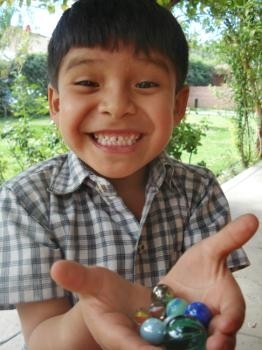 P
P
Pakistan where nearly one third of the population live in absolute poverty. Girls suffer a risk of abuse, lack of access to education and a lack of proper nutrition and health care.
Palestinian Territories at either Bethlehem or Rafah, where restrictions make day-to-day life difficult. Too many children suffer from trauma and are victims of economic pressures.
Panama where there are many social problems and around 40% of the population lives below the poverty line.
Paraguay where many children work to supplement family income and over one third of children are not able to finish primary school.
Peru one of the largest countries in South America. Despite some investment in infrastructure, many people still live in slums without access to basic services.
Philippines where more than 90% of the population live below subsistence level, many in huge slums. 7 SOS Children's Villages provide a loving family environment for children.
R
Romania where over one third of the population live in poverty as a result of high unemployment. Many children still live in institutional care despite a transition from Communism in 1990.
Russia where, despite positive moves, the benefits of the economy are yet to filter through to some of the ordinary population. Children feel the impact as many live on the streets or are at risk of being abandoned by their families.
Rwanda where civil war destroyed much of the country's infrastructure, severely affecting women and children. Four SOS Children's Villages are home to more than 400 children.
S
Senegal at either Louga, Dakar or Kaolack. Migration to urban areas has resulted in high levels of unemployment.
Serbia in Kraljevo in the centre of the country, where household poverty and family support are under extreme pressure.
Sierra Leone which is one of the smallest countries in Africa, but is highly populated and has been devastated by civil war for years.
Somalia where much of the population has deteriorating health, and levels of poverty mean orphans have to fend for themselves. The country has been politically unstable since the early 1990s.
Somaliland an autonomous region of Somalia, where literacy rates are low and poverty is a long term issue.
South Africa which has unequal wealth distribution (nearly two thirds of the population live in poverty), and many children die annually from treatable diseases.
South Korea where orphans are still an issue in this fast developing country.
South Sudan where there are only three proper hospitals and a high maternal mortality rate.
Sri Lanka where ethnic conflict has caused huge suffering to children in this South East Asian country with hundreds of thousands of people displaced by conflict.
Sudan which is one of the poorest countries in the world. Many people remain below the poverty line and are largely dependent on food aid.
Suriname learn more about our past work here.
Swaziland where nearly two thirds of the population live below the poverty line. Only half the population has access to clean water and there is a high infant mortality rate.
Syria, one of the poorer Arab countries, where economic factors have led to increased unemployment and poverty.
T
Tanzania at Zanzibar, Arusha or Dar Es Salaam, where social development is threatened by the HIV/AIDS pandemic.
Thailand South East Asia, where large differences in wealth mean much of the population live in extreme poverty.
Tibet where children who make the dangerous journey from China find a family with SOS Children.
Togo where over a third of school age girls do not attend school and most of the population exists on subsistence farming. Food production does not cover the country's needs.
Tunisia where high unemployment and families living in slums mean children suffer from social deprivation.
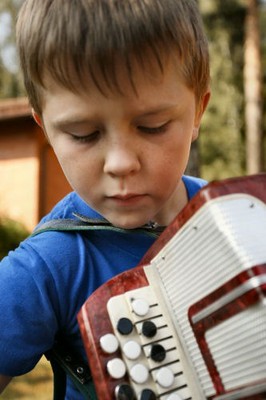 U
U
Uganda one of the poorest countries in the world, where life expectancy is low and there is a high prevalence of HIV/AIDS.
Ukraine in Brovary, near Kiev, where after-effects of the Chernobyl disaster are still being seen today.
Uruguay at Montevideo (near Santiago Vazquez), Salto, or Florida where migration to urban coastal areas has seen many social problems.
USA learn more about our work here.
Uzbekistan at Tashkent or Samarkand, in this former Soviet Union country which has seen extremely slow economic growth since independence.
V
Venezuela where more than half the population live in shanty towns and slums.
Vietnam where there are increasing gaps in wealth and the average daily income is less than £1 per day for many living in shanty towns and slums.

 Return to Schools Wikipedia Home page…
Return to Schools Wikipedia Home page…
